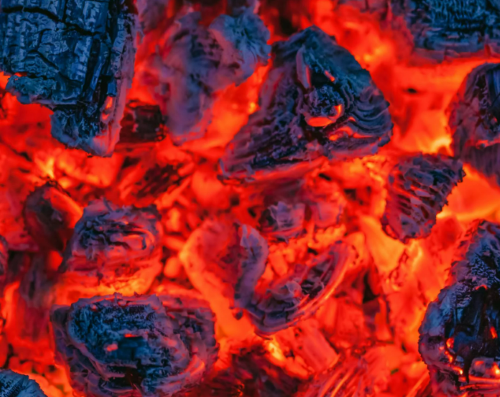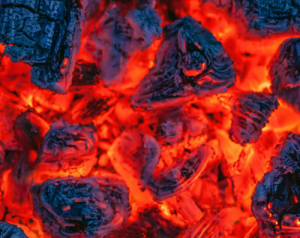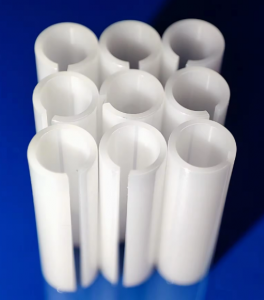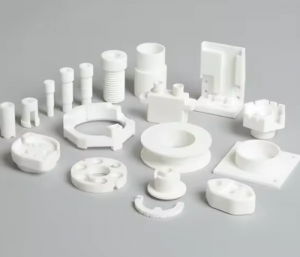Special Refractories: Zirconia, Alumina, Magnesia, and Silicon Oxide

Introduction
Special refractories find a range of industrial applications. Materials such as zirconia, alumina, magnesia, and silicon oxide are extensively used due to their superior heat resistance, durability, and chemical stability. Each of them offers unique properties that make them suitable for specific applications where ordinary materials would fail. This overview explores the characteristics, uses, and advancements of these four key refractory materials.

Understanding Special Refractories
Special refractories are vital components in numerous high-temperature industrial processes, ranging from metallurgy to ceramics and glass production. These materials are able to withstand extreme conditions, such as high temperatures above 1700°C, corrosive environments, and mechanical stress, while ordinary refractories cannot tolerate them.
These advanced materials are categorized based on their unique properties and raw materials into five key types.
- Oxides with high melting points and their composites include materials like alumina and zirconia. They can withstand extremely high temperatures.
- Refractory compound materials feature carbides, nitrides, borides, and silicides. They stand out for their exceptional hardness and thermal stability.
- Cermets: Such a combination of ceramics and metals provides mechanical strength along with resistance to high temperatures and corrosion.
- High-temperature amorphous materials and inorganic coatings are used for their protective qualities against heat and corrosion. These materials include various non-crystalline substances and coatings.
- High-temperature fibers comprise ceramic and carbon fibers. They find uses in insulation and serve as reinforcing materials in composite structures, enhancing durability and thermal resistance.
Related reading: What Are The Special Refractories Widely Used In Modern Industry?
Comparing Zirconia, Alumina, Magnesia, and Silicon Oxide
Special refractories are primarily classified based on their chemical composition. The most commonly used oxides are zirconia, alumina, magnesia, and silicon oxide. Each type has unique properties that make it suitable for specific applications in harsh environments.
1. Zirconia (ZrO2)
Zirconia, or zirconium dioxide, is notable for its high melting point and excellent thermal stability. It stands out for its ability to withstand sudden changes in temperature, which makes it highly resistant to thermal shock. Additionally, zirconia has low thermal conductivity. It is also resistant to attack by most molten metals and slags.

Zirconia finds applications in various fields:
- Ceramics and Glass Production: Zirconia is employed in high-performance ceramics and serves as a protective coating in glass melting tanks.
- Metal Manufacturing: It serves as a refractory lining in furnaces and ladles during steel production, resisting extreme temperatures and corrosive byproducts.
- Dental and Medical Prosthetics: Zirconia's biocompatibility makes it a popular choice for dental crowns and implants. It offers a combination of strength, durability, and aesthetic appeal.
2. Alumina (Al2O3)
Alumina, or aluminum oxide, is one of the most commonly used refractory materials due to its very high melting point and strength. It is extremely hard, making it highly resistant to wear and erosion. Alumina refractories are also known for their good electrical insulation properties.

Here's a concise look at the applications of alumina:
- Furnace Linings: Alumina is commonly used in the linings of rotary cement kilns and various applications within the steel industry, where its high melting point and stability under heat are essential.
- Electrical Insulators: High-purity alumina serves as an effective electrical insulator, particularly in spark plugs and other electronic components.
- Abrasive Materials: Alumina's significant hardness makes it ideal for use as an abrasive in grinding wheels and other abrasive tools.
3. Magnesia (MgO)
Magnesia or magnesium oxide comes with excellent heat-resistant capabilities. It is highly basic, making it resistant to slag and other acidic materials. Magnesia has a high melting point and is good at conducting heat.
Let’s look at the uses of magnesia across different sectors:
- Steel Industry: Magnesia is utilized in refractory linings for steel-making furnaces, offering excellent resistance to high temperatures and corrosive metallurgical byproducts.
- Cement and Glass Industries: It acts as a protective lining in cement kilns and glass furnaces, enhancing durability and efficiency in high-temperature environments.
- Environmental Applications: Its alkaline nature makes it suitable for neutralizing acid in environmental applications.
4. Silicon Oxide (SiO2)
Silicon oxide, commonly referred to as silica, has a high melting point and is most notable for its ability to withstand extreme temperatures. It is highly stable and resistant to most acids and other chemicals.
Silica is employed across different sectors for its unique properties:
- Glass Making: The primary use of silica is in the production of glass.
- Ceramics: Silica is used to create ceramic products that require high heat resistance, such as tiles and porcelain products.
- Foundry Work: In foundries, silica serves as a crucial material for creating molds used in metal casting.
Advancements and Future Directions
Recent advancements in the field of special refractories focus on enhancing the properties of these materials through nanotechnology, improved synthesis methods, and composite formulations. These developments aim to improve their thermal resistance, reduce material degradation, and extend their life in industrial applications.
The future of refractory technology also includes the creation of smarter refractories that can react to changes in their environment, such as adjusting their thermal conductivity or repairing themselves when damaged. These innovations promise to revolutionize industries that rely on high-performance materials capable of withstanding harsh conditions.
Conclusion
Zirconia, alumina, magnesia, and silicon oxide each offer distinct advantages that make them essential in modern industrial applications (See Table 1). The continuous development of these materials ensures that they remain relevant in facing the challenges of high-temperature environments and aggressive chemical exposures.
Table 1. Comparing Zirconia, Alumina, Magnesia, and Silicon Oxide
| Material | Melting Point | Key Properties | Primary Applications | |
| Zirconia (ZrO2) | ~2700°C | High thermal stability, resistant to thermal shock, low conductivity | Ceramics, glass production, refractory linings, dental prosthetics | |
| Alumina (Al2O3) | ~2072°C | Extremely hard, high strength, good electrical insulation | Furnace linings, electrical insulators, abrasive materials | |
| Magnesia (MgO) | ~2800°C | Excellent heat resistance, basic, good heat conductivity | Steel industry, cement and glass industry, environmental applications | |
| Silicon Oxide (SiO2) | ~1713°C | High temperature resistance, chemical stability | Glass making, ceramics, foundry work |
Advanced Refractory Metals (ARM) is a prominent manufacturer and supplier specializing in refractory metals such as Tungsten, Molybdenum, Tantalum, Rhenium, Titanium, and Zirconium. ARM is dedicated to delivering high-quality special refractories to a global clientele. Customization is also welcome. Please check the homepage for more information.
{{item.content}}
LEVE A REPLY
{{item.children[0].content}}
{{item.content}}






